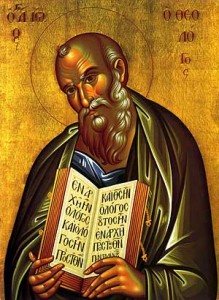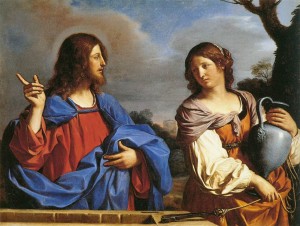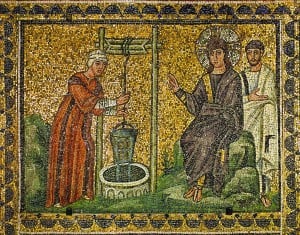Here’s a trivia question. Who wrote the first ever commentary on a piece of Christian scripture? The answer is quite surprising, and it says a lot about some of the diverse subcultures that existed within different parts of the Christian world
Elaine Pagels earned fame through her 1979 book The Gnostic Gospels. Far less well known is her 1973 work The Johannine Gospel in Gnostic Exegesis: Heracleon’s Commentary on John, a technical-sounding study that actually deals with a very important topic in early Christian history. Like her later work, it points to the strikingly narrow boundaries that separated orthodoxy and heresy, especially in the intellectual hothouse of Egypt. As so often, daring innovations in this region soon spread throughout the Christian world.
During the first and second centuries, Egypt was a very lively center of Christian activity, but most was far-removed from conventional views of Catholic orthodoxy. The prevailing thinkers were Gnostics like Basilides and Valentinus. Whatever their differences with the emerging Great Church, they shared a passion for the gospels, especially that of John. It is an open question whether John in its present form originated in Egypt. The oldest extant gospel fragment, Rylands Library Papyrus P52, is a portion of John written around 125, during the lifetime of both Basilides and Valentinus. (By the way, on some of the issues involved in dating these materials, see Roger Bagnall’s important Early Christian Books in Egypt).
So enthusiastic were Egypt’s Gnostics about John that some Christians rejected both John’s Gospel and Revelation, crediting their writing to the infiltration of some sinister Gnostic. If heretics loved these books so much, something had to be wrong with them.
Valentinus’s pupils carried on his love affair with the Fourth Gospel. Around 175, one disciple, Heracleon, wrote a commentary on John and possibly other gospels, which represent the first certain examples of commentaries on New Testament books. I repeat: Heracleon’s writing on John is the first surviving commentary on any portion of Christian scripture, and possibly the first ever written. (Basilides may or may not have attempted something earlier, also in Egypt, but that is controversial).
Already by the 170s, then, John was not only well known as a gospel, but the text enjoyed immense prestige, in Egypt at least.
Despite his heretical status, Heracleon had orthodox readers, particularly in what was almost certainly his homeland of Egypt. Clement of Alexandria cited him (although not this commentary). Around 230, moreover, Origen quoted Heracleon’s work extensively, and (sometimes) approvingly. This Egyptian attitude is in sharp contrast to that of Irenaeus in Gaul, who was baffled and horrified to see the heretics misappropriating the sacred text, to which he believed they had no legitimate claim.
Through Origen, portions of Heracleon’s commentary survive, and give some idea of his approach. The most substantial section concerns the Samaritan Woman who talks with Jesus at the well. Heracleon discussed the text in fine detail, and tries to draw complex meanings from every nuance of the words. Naturally, his readings reflect his doctrine that the material world is the creation of a flawed inferior God, the Demiurge or Craftsman. The Samaritan Woman, meanwhile, represents the “pneumatic” (spiritual) Christian.
One text is: “Jesus said to her, ‘Woman, believe me, the hour is coming when neither on this mountain nor in Jerusalem will you worship the Father.’” Heracleon expounds:
The mountain represents the Devil, or his world, since the Devil was one part of the whole of matter, but the world is the total mountain of evil, a deserted dwelling place of beasts, to which all who lived before the law and all Gentiles render worship. But Jerusalem represents the creation or the Creator whom the Jews worship . . . The mountain is the creation that the Gentiles worship, but Jerusalem is the creator whom the Jews serve. You then who are spiritual should worship neither the creation nor the Craftsman, but the Father of Truth. And [Jesus] accepts her as one of the already faithful, and to be counted with those who worship in truth.
On the text “So the woman left her water jar, and went away into the city, and said to the people, ‘Come, see a man who told me all that I ever did. Can this be the Christ?’” Heracleon comments: The water jar that is capable of receiving life is the disposition and the thought of the power that is from the Savior. She left it with him, that is, she had with the Savior such a vessel in which she had come to fetch living water.
Reading Heracleon, we immediately find ourselves in a world of allegorical, mystical, Biblical interpretation that is precisely that of Origen and the so-called Alexandrian school. Not only was the mainstream Christian happy to quote the heretic, but he shared his approach to unpacking the Biblical text.
When we trace the potent tradition of Alexandrian Christianity and Christian scholarship, then, we have to acknowledge its heterodox roots.














